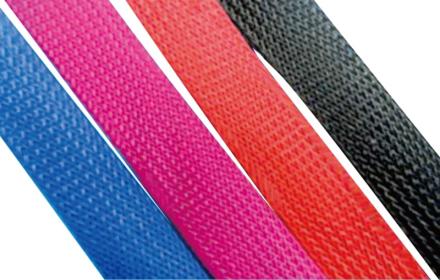Nylon Braided Hoses have gained widespread use across various industries due to their remarkable strength, flexibility, and resistance to environmental factors. From automotive and hydraulic systems to fluid transfer applications, nylon braided hoses play a critical role in ensuring durability, performance, and safety. But what exactly is a nylon braided hose, and how does it work? Let’s delve into its structure, function, and the benefits it offers.

Understanding the Structure of Nylon Braided Hose
A nylon braided hose consists of two main components: the inner tube and the braided outer layer. The inner tube is typically made from a flexible and durable material such as rubber, plastic, or thermoplastic, which serves as the conduit for fluids, gases, or other substances. The outer layer is made from nylon fibers that are tightly woven or braided around the inner tube. This combination of materials provides a hose that is both flexible and strong.
The braiding of nylon fibers creates a tight, protective mesh around the inner tube, offering several advantages. This structure helps the hose withstand high pressures and resist damage from external factors like abrasion, cuts, and impacts. In many cases, the nylon braided hose is also coated with additional materials such as PVC, polyurethane, or a metal layer for extra protection, depending on the specific application.
How Does Nylon Braided Hose Work?
The primary function of a nylon braided hose is to transport fluids or gases under controlled conditions while offering protection against external forces. Here's how it works:
Pressure Resistance: The braided nylon fibers provide exceptional strength, which allows the hose to handle high-pressure environments without bursting or distorting. This is particularly important in hydraulic and pneumatic systems where consistent pressure is critical.
Abrasion Resistance: The tightly woven braid acts as a protective shield, preventing damage from friction and abrasions. This makes nylon braided hoses ideal for environments where they may come into contact with rough surfaces or sharp objects, such as in automotive engine compartments or industrial machinery.
Chemical Resistance: Nylon itself is naturally resistant to a wide range of chemicals, making the hose suitable for applications involving acids, oils, fuels, or solvents. The outer nylon braiding also adds an extra layer of defense against chemical exposure, ensuring the integrity of the hose and the substances inside.
Flexibility and Durability: Despite its strength, the nylon braided hose is highly flexible. This flexibility allows it to bend and maneuver around obstacles without kinking or losing shape. It can also tolerate temperature extremes, making it suitable for applications ranging from -40°C to over 100°C, depending on the type of inner tube material used.
Long Lifespan: The combination of a durable inner tube and a braided outer layer ensures that the hose can endure harsh conditions over an extended period. This results in a longer service life and less frequent replacements, which can lead to cost savings in the long run.
Key Benefits of Nylon Braided Hose
High Pressure Tolerance: Nylon braided hoses can withstand higher pressures compared to traditional rubber or plastic hoses, making them a preferred choice in hydraulic systems, fuel lines, and other high-pressure applications.
Enhanced Safety: The braided structure provides an additional safety margin, as it helps contain the inner tube even under extreme pressure or if the hose is punctured, reducing the risk of hazardous spills or leaks.
Chemical and Abrasion Resistance: Nylon’s natural resistance to chemicals, combined with the braided design, ensures the hose remains functional and durable in a variety of environments. This makes nylon braided hoses particularly useful in the automotive, chemical, and fluid transfer industries.
Flexibility and Easy Handling: The flexibility of nylon braided hoses allows for easy installation and routing around corners, making them ideal for complex systems with limited space.
Lightweight Yet Strong: Despite its impressive strength, the nylon braided hose remains relatively lightweight, reducing the overall weight of the systems in which it is used, such as automotive or industrial machinery.
Applications of Nylon Braided Hose
Nylon braided hoses are incredibly versatile and can be found in a wide range of industries and applications, including:
Automotive: Used in fuel lines, brake lines, air conditioning systems, and coolant hoses. The resistance to heat and abrasion makes it a popular choice in the automotive sector.
Hydraulic Systems: Ideal for use in high-pressure hydraulic lines and fluid systems where strength, durability, and resistance to pressure are critical.
Industrial Machinery: Nylon braided hoses are widely used in machinery and manufacturing equipment for fluid transfer, cooling systems, and pressure lines.
Chemical and Fluid Transfer: Due to its chemical resistance, it is often used in the transportation of fuels, oils, solvents, and other chemicals.
Aerospace: In the aerospace industry, nylon braided hoses are used to manage fluid and gas lines in aircraft due to their lightweight nature and resistance to extreme temperatures and pressures.
Nylon braided hoses are indispensable components in modern industries due to their strength, durability, and versatility. Their ability to withstand high pressure, resist abrasion, and endure harsh chemicals and temperatures makes them ideal for a wide array of applications. By understanding the structure and function of nylon braided hoses, industries can better appreciate their importance in maintaining safe, efficient, and long-lasting systems. Whether used in automotive, hydraulic, industrial, or fluid transfer applications, nylon braided hoses provide the protection and performance necessary for modern-day operations.





 English
English
